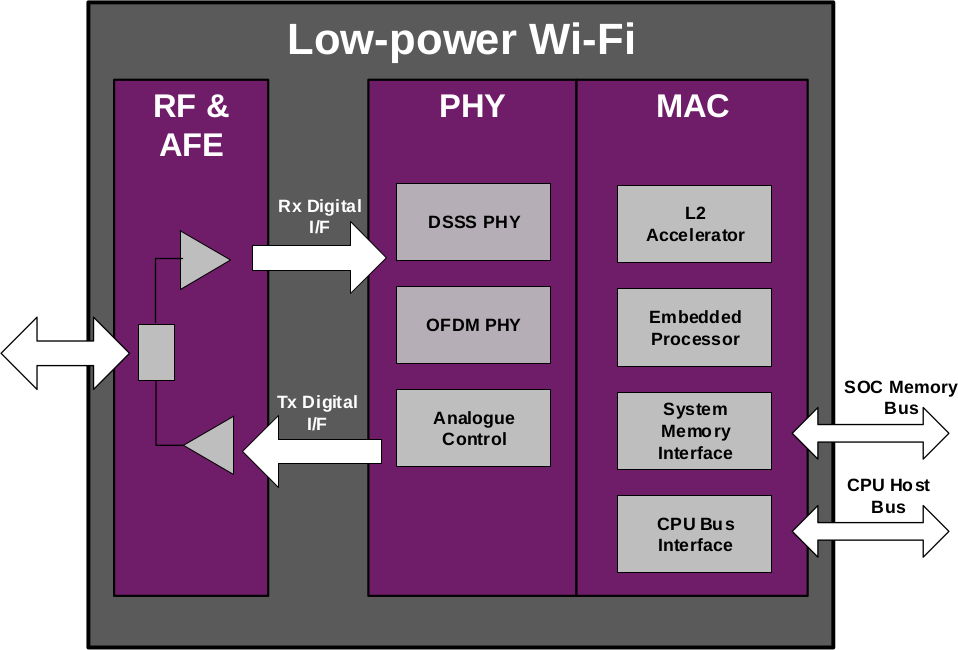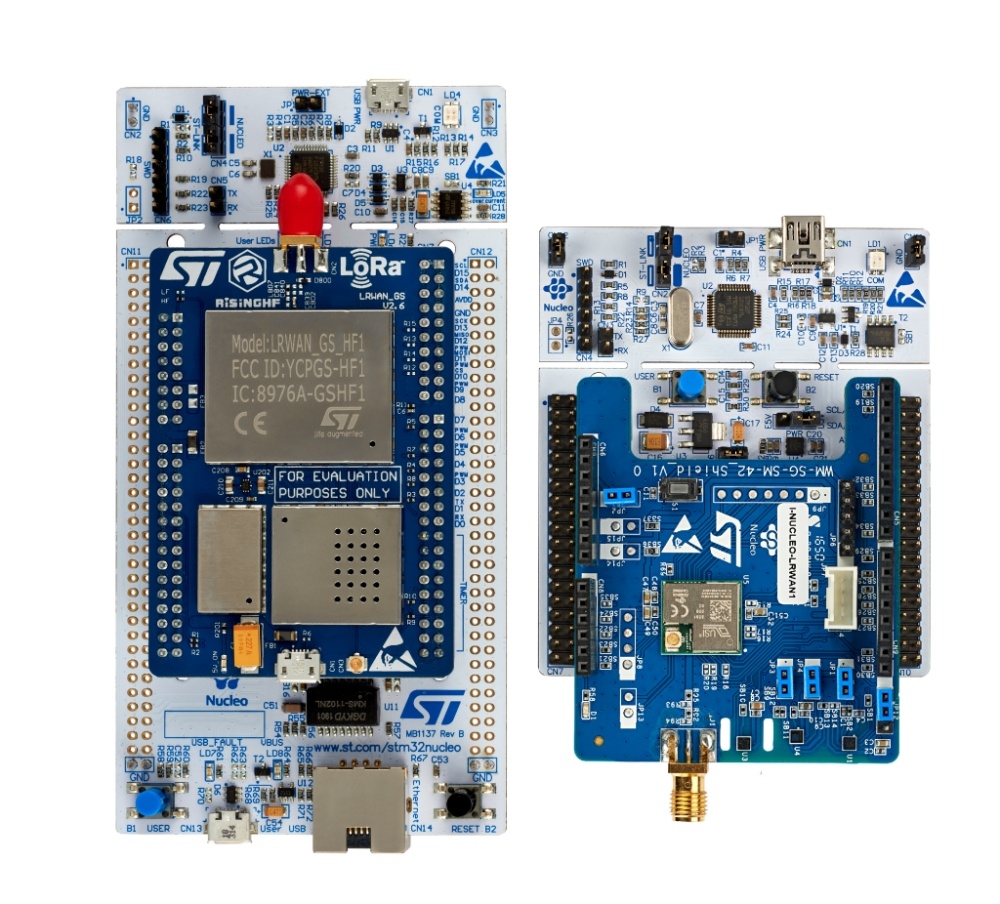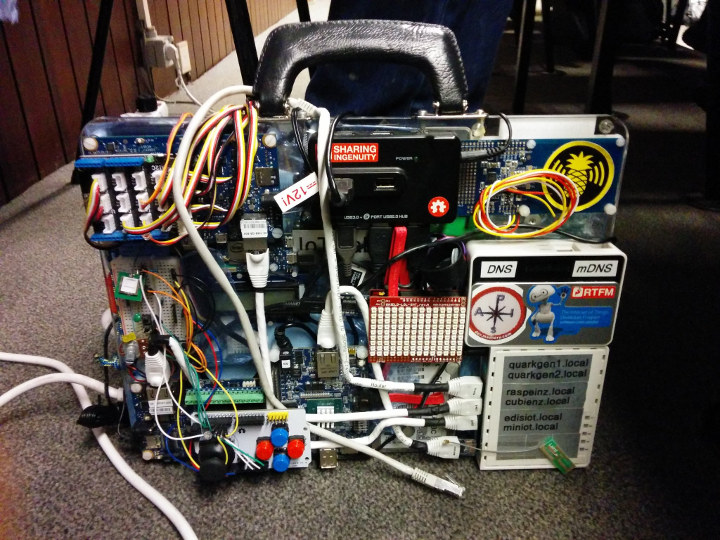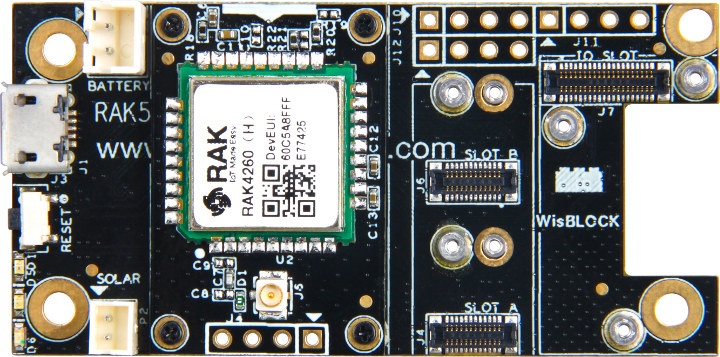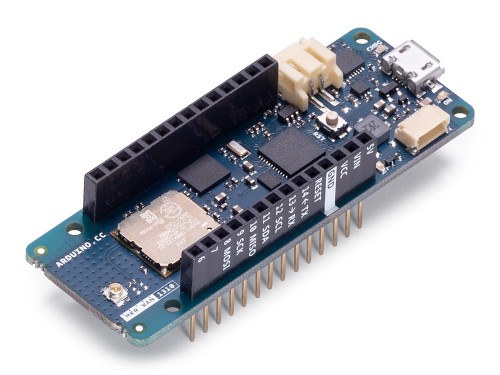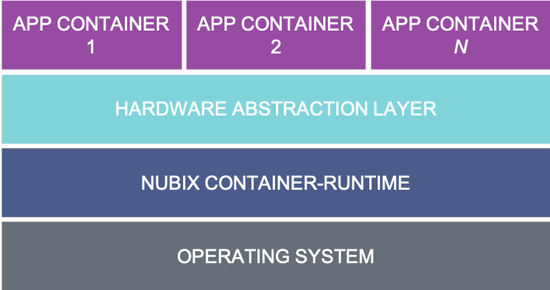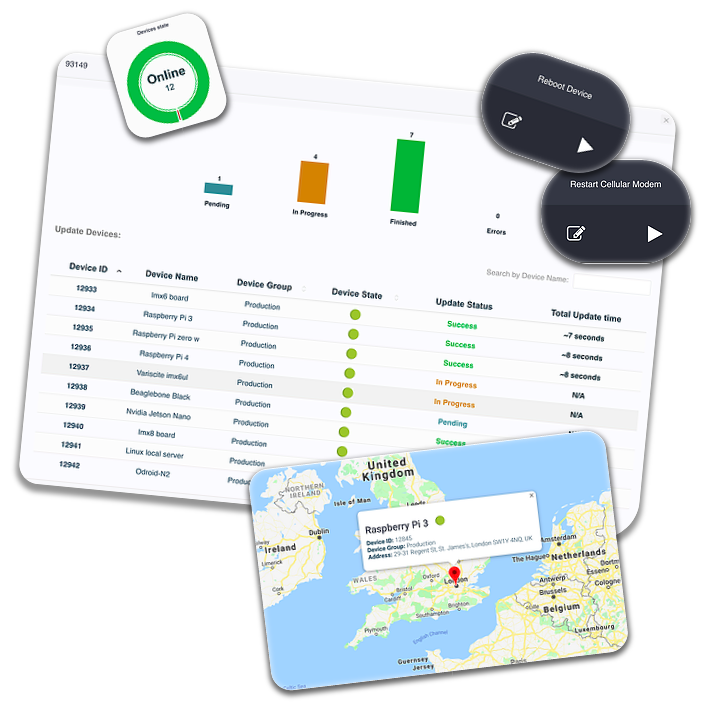Imagination Technologies is better known for their PowetVR GPUs and as the previous owner of MIPS technology, but they do have other products as well and the company just announced their second generation 802.11n WiFi IP designed for low power applications Ensigma iEW220 is an IEEE 802.11a/b/g/n 1X1 SISO Wi-Fi IP solution comprised of RF, baseband and MAC, and supporting both 2.4GHz and 5GHz spectrum. iEW220 specifications: RF Features Dual-band 2.4 and 5 GHz RF including PA Power efficient AGC Optimized PLL power consumption Customized PA to minimize Tx power consumption Power optimized DAC/ADC design Integrated transmit/receive switch for RF Single pin RF antenna interface IEEE 802.11 PHY Support (2.4/5 GHz) IEEE 802.11b DSSS/CCK (up to 11 Mbps) IEEE 802.11a/g OFDM (up to 54 Mbps) IEEE 802.11n OFDM MCS 0-7, (20/40 MHz channels, up to 72.2/150 Mbps) Station, soft AP and Wi-Fi direct with up to four associated devices Tx […]
STMicroelectronics Introduces Affordable LoRa Development Packs For All User Types
STMicroelectronics has recently announced the launch of a new set of LoRa Development packs, which are not only affordable, but they are aiming to a large pool of users from big organizations, small companies, hackers, engineers, students, and hobbyists. The ready-to-use development packs are aimed for applications bent on leveraging LoRa ’s long-range, low-power wireless IoT connectivity for tracking, positioning, metering, and many related applications. STMicroelectronics is releasing the P-NUCLEO-LRWAN2 pack and P-NUCLEO-LRWAN3 pack. Both packs provide a complete LoRaWAN development kit, and they include gateways, end-nodes, and ST tools, which are all based on the STM32 Nucleo evaluation boards. The LoRa gateway on both packs is based on the STM32 Nucleo-144 development board, NUCLEO-F746ZG. The STM32 Nucleo-144 development board with STM32F746ZG MCU supports Arduino, ST Zio, and Morpho connectivity. The Gateway header pins are exposed out to facilitate more development, and they support interfacing with LoRaWAN network-server providers LORIOT, Actility, myDevices Cayenne for LoRa […]
FOSDEM 2020 IoT Devroom Call for Proposals
FOSDEM (Free & Open-source Software Developers’ European Meeting) takes place every year in Brussels, Belgium on the first weekend of February. FOSDEM 2020 is scheduled for February 1-2, and now that developer rooms have already been announced, there are calls for proposals for each topic. Benjamin Henrion (aka Zoobab), a frequent reader and commenter of CNX Software, will be in charge of the IoT devroom and has now initiated a call for proposals for Internet of Things talks. The devroom will take place on Saturday or Sunday between around 10.30 and 18:00. Each talk will last 25 minutes with a 5-minute break between talks. The talks must be about fully open source projects that cover one of the topics below: Machine-to-machine (M2M) communication on small embedded devices Distributed applications in any field of interest for autonomous/self-controlled devices, (e.g. domotics, automotive, etc) Networking: TCP/IP, mesh networking, message queuing, cross-layer solutions Real-life […]
RAKWireless RAK4260 is a Tiny LoRAWAN Module based on Microchip SAMR34 LoRa SiP
Rakwireless has just announced a new module part of their LPWAN family: RAK4260 LoRaWAN module based on Microchip ATSAMR34J18B LoRa SiP and at just 15x15x1.2 mm, one of the smallest LoRaWAN modules in the market. The new module is cheaper than the company’s earlier RAK811 module and consumes less power at just 790 nA in sleep mode. The company also provides a RAK4260 evaluation board with easy access to GPIOs and serial interfaces. RAK4260 LoRaWAN Module Specifications: SiP – Microchip ATSAMR34J18 SiP with SAM L21 Arm Cortex M0+ MCU @ 48 MHz, up to 40 KB RAM, up to 256 KB Flash LoRa Connectivity Frequency Range – 862 to 1020 MHz High level of accuracy and stability (32MHz TXCO) Max Tx Power: 20dBm; Max Sensitivity: -148dBm; Rx Current: 17mA (typical) Compliant with LoRaWan 1.0.2 Expansion – Castellated holes with I2C, SPI, ADC, UART, GPIOs Power Consumption Low RX current of […]
LPWAN Market Update – An Interview with RAK Wireless CEO
CNX Software interviews Ken Yu, RAK Wireless’ founder & CEO, to learn more about the company and the current & future state of the LPWAN (Low Power WAN) market especially with regards to NB-IoT and LoRaWAN. CNXSoft: We’ve already covered several products from RAK Wireless on CNX Software, starting with WiFi IoT boards several years ago, and more recently LPWAN products based on NB-IoT or LoRa. But for readers who may not be familiar with RAK Wireless yet, could you provide a short description of what the company does? Ken Yu: RAKwireless was founded in 2014. The core founder team consists of professionals coming from established leaders in the Networking industry as Qualcomm, H3C, etc. Because our engineers have more than 10 years of experience designing Wi-Fi solutions, this was the core of our business in the beginning. RAKwireless is working towards a vision of a connected world and In […]
Arduino MKR WAN 1310 LoRa Board Gets HW Security, Longer Battery Life and a 2MB SPI flash
Two year ago Arduino launched MKR WAN 1300 board powered by Arduino Zero compatible Microchip Atmel SAMD21 32-bit ARM Cortex M0+ MCU and a Murata CMWZ1ZZABZ LoRa module based on Semtech SX1276 and STMicro STM32L microcontroller. The company has now announced a new improved LoRa board – MKR WAN 1310 – with lower power consumption thanks to a new battery charger , a 2MB SPI flash which enables data logging and other OTA (Over-the-Air) functions, and a crypto chip that can securely store credentials and certificates. Specifications: MCU – Microchip Atmel SAMD21 32-bit ARM Cortex M0+ MCU @ 48 MHz with 32 KB SRAM, 256 KB flash (8KB for bootloader) External Storage – 2MB SPI flash Digital I/O Pins – 8x digital I/Os, 12x PWM, UART, SPI, and I2C, 8x external interrupts Analog Pins – 7x analog inputs (8/10/12-bit ADC), and 1x analog output (10-bit DAC) DC Current per I/O […]
Nubix Edge-native Tiny Containers for IoT Apps Released For Raspberry Pi and BeagleBone SBCs
Nubix has just launched the developer edition of its edge-native tiny containers for IoT application development and analytics that target microcontrollers and single-board computers such as Raspberry Pi 3/4 and BeagleBone Black. Typical cloud solutions such as Docker are often too large with tiny IoT devices, and to solve these issues, Nubix tiny containers are sized in kilobytes, instead of megabytes, or about 100 times smaller than a Docker container, in order to be small enough to run at the edge. Nubix.io provides access to a library of sensors, analytics and tiny services that leverage open source languages and pre-packaged functions to easily create IoT applications in a few minutes. Analytics is commonly done in the cloud, which may cause issues in environments with limited or intermittent connectivity, so to solve this issue, Nubix provides analytics functionality directly on the IoT device, eliminating the latency, bandwidth, connectivity and cost constraints […]
UpSwift – Manage IoT & Embedded Linux Devices Easily & Quickly
UpSwift offers a GUI based management interface to their customers to update, manage, control & diagnose IoT and embedded devices. The solution also supports OTA updates to any device which is running the Linux operating system including Raspberry Pi board and other Arm SBC’s. Because of the pull-based, client/server architecture, the client-side binary looks for updates in configurable frequent interval and executes the changes and updates. The communication between the client and the server is established over secured REST API’s. By monitoring the applications logs and other device parameters, UpSwift’s Cloud-Smart engine is capable of behaving intelligently by sending email alerts to the administrator. UpSwift Basic WorkFlow Post-registration and package selection with UpSwift Cloud-based dashboard, customers can start adding their devices into UpSwift dashboard. Depending upon the selected plans (number devices connected, features, etc.. will vary depends on the plan chosen), customers will be able to manage their products remotely. […]


